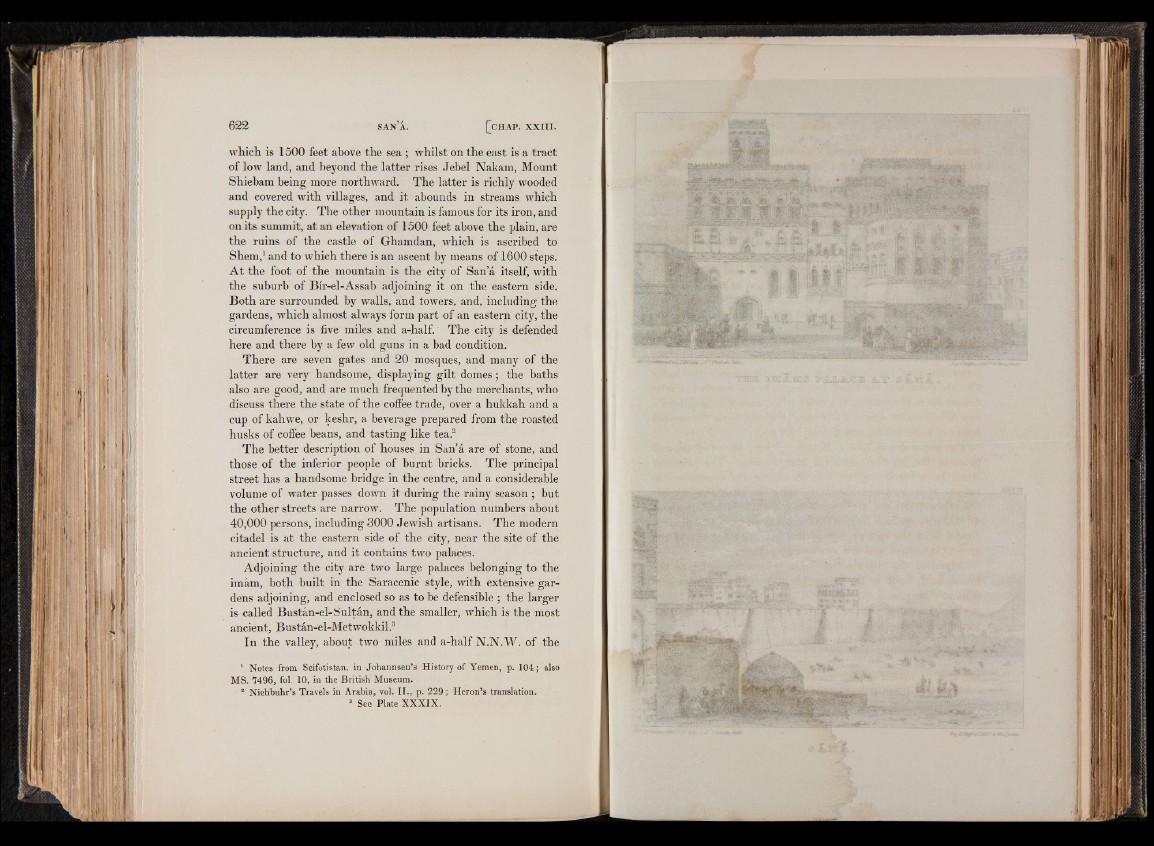
which is 1500 feet above the sea ; whilst on the east is a tract
of low land, and beyond the latter rises Jebel Nakain, Mount
Shiebam being more northward. The latter is richly wooded
and covered with villages, and it abounds in streams which
supply the city. The other mountain is famous for its iron, and
on its summit, at an elevation of 1500 feet above the plain, are
the ruins of the castle of Ghamdan, which is ascribed to
Shem,1 and to which there is an ascent by means of 1600 steps.
At the foot of the mountain is the city of San’a itself, with
the suburb of Bir-el-Assab adjoining it on the eastern side.
Both are surrounded by walls, and towers, and, including the
gardens, which almost always form part of an eastern city, the
circumference is five miles and a-half. The city is defended
here and there by a few old guns in a bad condition.
There are seven gates and 20 mosques, and many of the
latter are very handsome, displaying gilt domes; the baths
also are good, and are much frequented by the merchants, who
discuss there the state of the coffee trade, over a hukkah and a
cup of kahwe, or keshr, a beverage prepared from the roasted
husks of coffee beans, and tasting like tea.2
The better description of houses in San’a are of stone, and
those of the inferior people of burnt bricks. The principal
street has a handsome bridge in the centre, and a considerable
volume of water passes down it during the rainy season ; but
the other streets are narrow. The population numbers about
40,000 persons, including 3000 Jewish artisans. The modern
citadel is at the eastern side of the city, near the site of the
ancient structure, and it contains two palaces.
Adjoining the city are two large palaces belonging to the
imam, both built in the Saracenic style, with extensive gardens
adjoining, and enclosed so as to be defensible ; the larger
is called Bustan-el-Sultan, and the smaller, which is the most
ancient, Bustan-el-Metwokkil.3
In the valley, about two miles and a-half N.N.W. of the
1 Notes from Seifotistan. in Johaiinsen’s History of Yemen, p. 104; also
MS. 7496, fol. 10, in the British Museum.
3 Niehbuhr’s Travels in Arabia, vol. II., p. 229 ; Heron’s translation.
3 See Plate XXXIX.